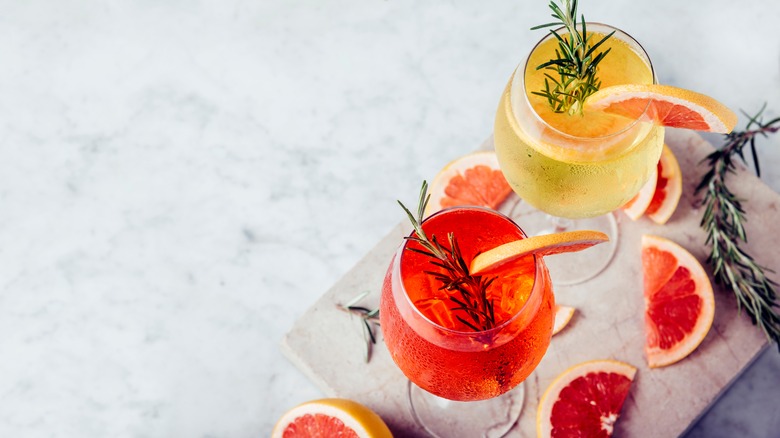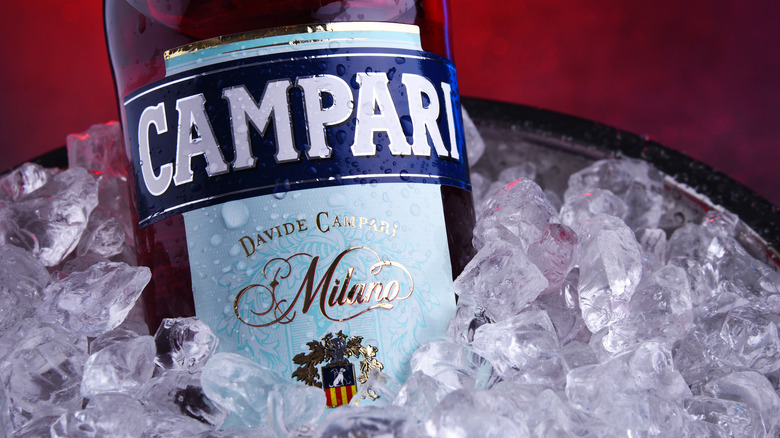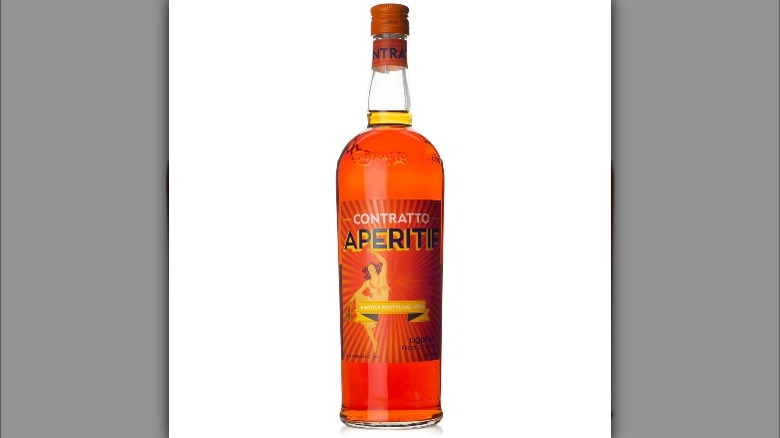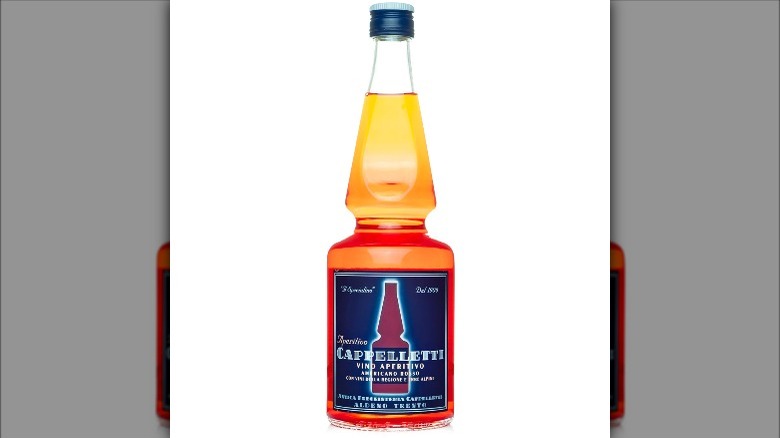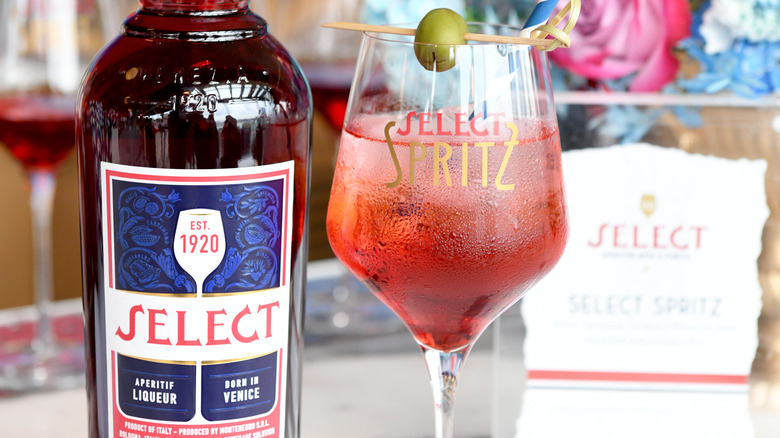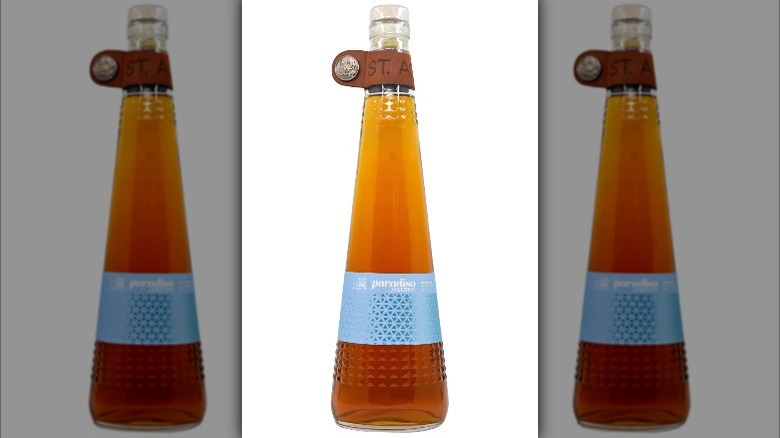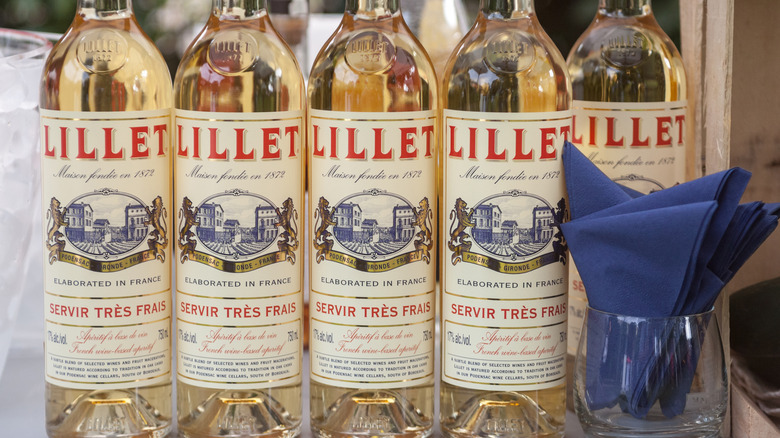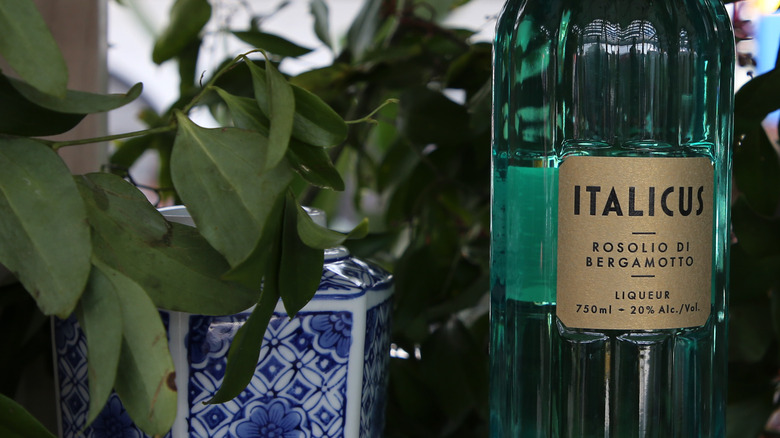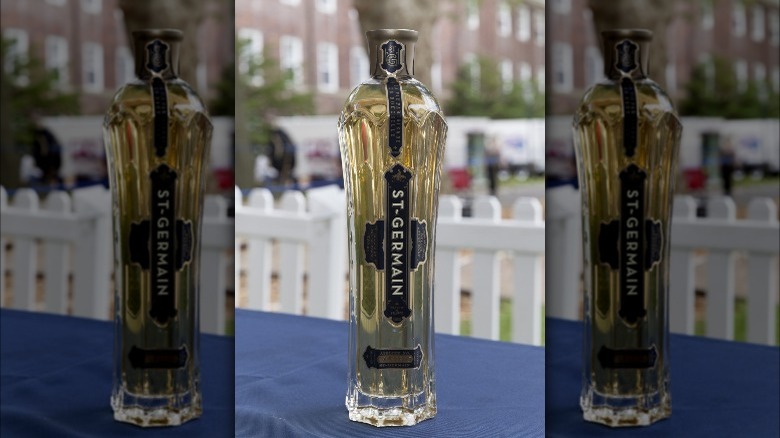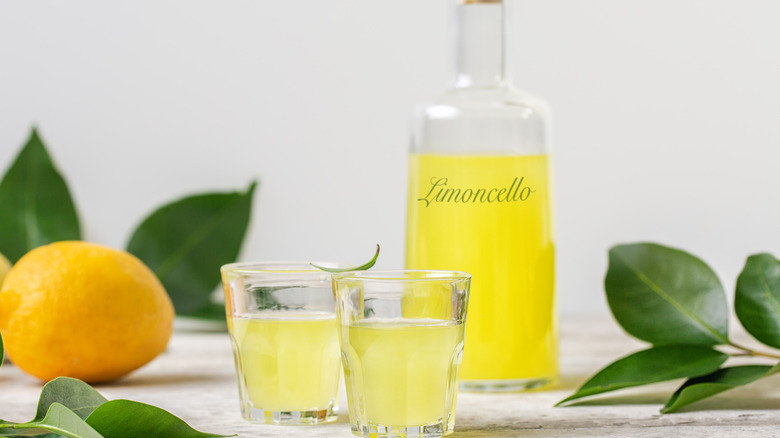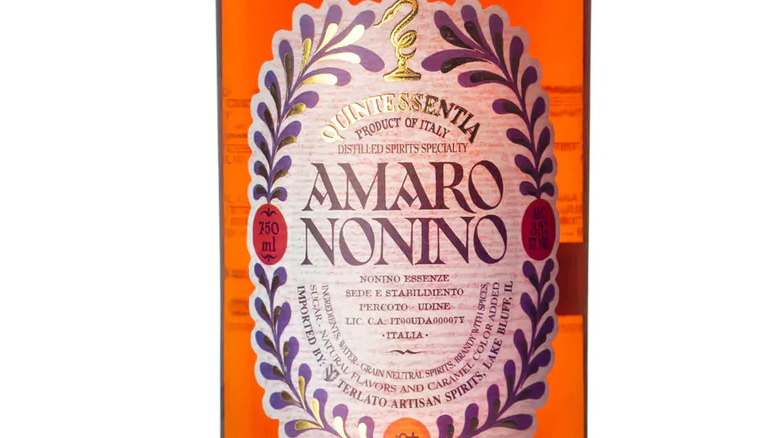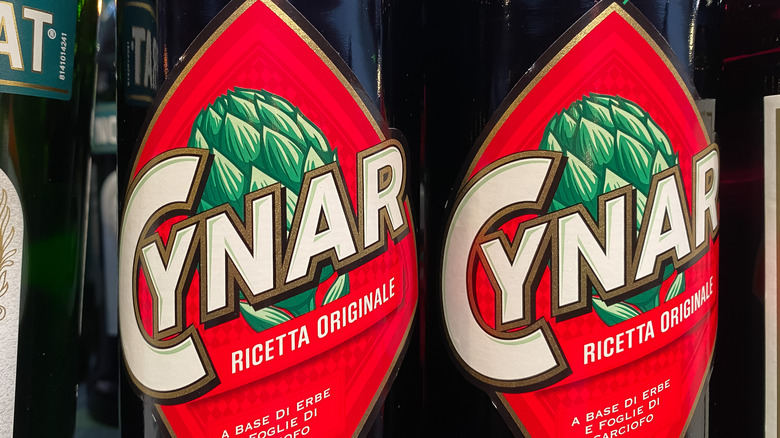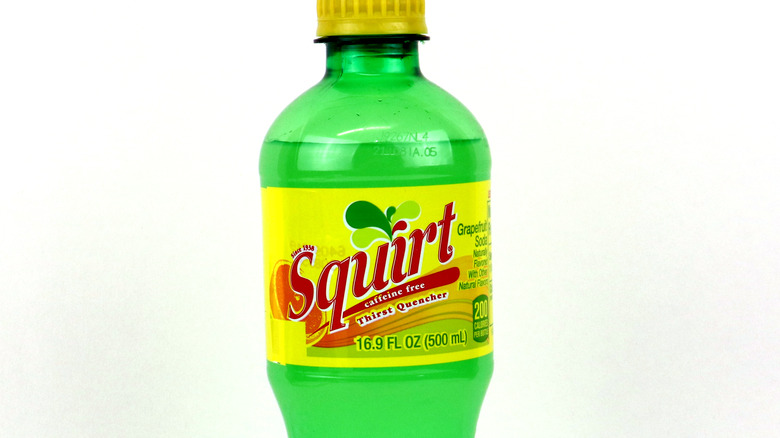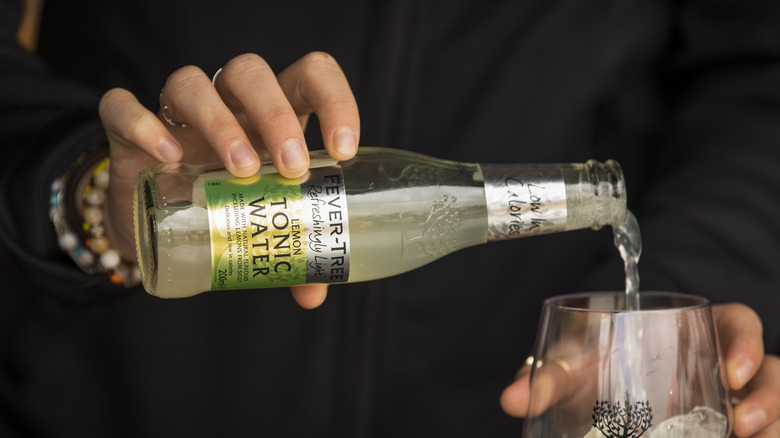13 Alternatives For An Aperol Spritz
Drinking a classic Aperol spritz has the power to (mentally) transport you to a beachside patio on the Italian coast. This summer favorite has become a ubiquitous staple around the world, and drinkers can't get enough of its signature sweet, light, and slightly bitter flavor.
With a classic ratio of 3:2:1 parts prosecco, Aperol, and soda water respectively — plus an orange slice for garnish — it's quick, refreshing, and quaffable. With no shaking required, all you have to do is layer the ingredients over ice and enjoy.
While we'll never say no to this cornerstone of apertivo culture, there are also plenty of other options to reach for when you want something cold, crisp, and effervescent. From Aperol's crimson, bitter cousins, to rich, herbaceous amari, to zippy, citrus-forward liqueurs, the possibilities for creating an appetite enhancing pre-dinner drink are almost endless. All you need to do is swap out the Aperol for an equal measure of any of the options below for a new take on everyone's favorite spritz. Take a look at these Aperol spritz alternatives that will expand your drinking horizons.
Campari spritz
Though Campari and Aperol are different, they do share similarities — especially when it comes to using them in a spritz. You can think of Campari as Aperol's stronger and significantly more bitter counterpart. Though the exact ABV of Campari varies from 20.5% to 28.5% depending on where it's distributed and sold, it still packs nearly twice the punch of Aperol — which comes in at 11% — no matter where you are in the world.
Created by Gaspare Campari in Milan in 1860, Campari has played an iconic role in cocktail culture for over a century and a half. This vibrant, bracing crimson quaff has intense notes of orange, herbs, and bitter botanicals. The brand claims that the recipe is so complex, nuanced, and perfectly balanced that the omission of a single ingredient would destroy the essence of the beverage.
Campari gets its claim to fame as a key ingredient in a negroni, but it works just as well in a spritz when you want something bitter, albeit less boozy. The best part is, Campari is so popular that almost every bar has a bottle on the shelf, and most bartenders will happily swap out Campari for Aperol in a spritz. They'll probably compliment you on your taste, too!
Contratto Aperitif spritz
If you want something less sweet than Aperol, but less bitter than Campari, Contratto Aperitif might be your apertivo match made in heaven. Just like Aperol and Campari, Contratto Aperitif is a red, bitter Italian beverage that's layered, multifaceted, and downright delicious.
Made with 28 botanicals (10 of which are a closely guarded secret), it has tasty notes of bitter orange, wormwood, cinchona, and warming spices. It takes 35 days to extract the flavor from the botanicals, at which point the mixture spends another 40 days aging to perfection in steel tanks. Unlike Campari, which has relied on artificial coloring since 2006 for its eye-catching hue (via Wine Enthusiast), Contratto Aperitif's color is derived from all-natural carrot and beetroot extract.
Since Contratto Aperitif isn't as popular or widely stocked as Aperol, you might have to pay a visit to an Italy (or at least an Italian restaurant) to get your hands on a spritz when dining out, but we promise it's worth ordering if you see it on the back bar.
Cappelletti Aperitivo spritz
As another member of the bitter crimson Italian aperitif family, Cappelletti Aperitivo is a perfect choice when you want something that's similar to Aperol, but with more going on in terms of body and flavor. Unlike Aperol, this bottle is made from a wine base that's been infused with Alpine herbs. At 17% ABV, it's not as strong as Campari, but a little heftier than easy-drinking Aperol.
When used as the base of a spritz, it's light enough to drink in the afternoon (or in the morning at brunch), but flavorful enough to make you feel like you're drinking a more mature cocktail. It has a nice, bittersweet flavor with subtle hints of pine, herbs, and citrus that make it easy to throw back spritz after spritz.
This is another bottle that isn't as mainstream in the U.S. as other options, but you can find it in plenty of well-stocked liquor stores. Having a bottle on your bar cart when the craving for a spritz strikes is always a good idea!
Select Aperitivo sprtiz
Born in Venice in 1920, Select Aperitivo is another unmistakably Italian option that works beautifully as the base of a spritz. Created by the Pilla brothers, the brand has stayed true to its original recipe, and Venetians have been enjoying this ruby-red libation for over a century.
Crafted from over 30 botanicals, Select Aperitivo manages to be simultaneously floral, grassy, citrusy, and spicy, with notes of rhubarb, juniper, and even balsamic. It's fresh, interesting, and balanced — making it a flawless base for a spritz.
The key to enjoying a Select Spritz the Venetian way is all about the garnish, with a green olive taking this beverage from good to great. It adds a touch of salinity that enhances the other flavors, and is a nice bonus bite when you reach the end of your glass. Fair warning: Select Aperitivo spritzes are so delicious that you might never want to go back to Aperol again.
St. Agrestis Paradiso spritz
St. Agrestis Paradiso hails from Brooklyn rather than Italy, but it still makes an impeccable spritz. This golden-hued aperitif is more subtle and crowd-pleasing than other, more "in your face" bitter bases, and its notes of citrus and spice make it truly one of a kind.
Made from all-natural ingredients, this wine-based beverage is sold in a distinct, eye-catching tapered bottle. We recommend reaching for it as the base of a spritz when the weather starts to cool, as its mild notes of baked apple make it feel like a gentle nod to an autumn evening. Swap out the orange slice for a lemon twist, and you'll have a spritz you'll keep going back to.
The entire line of St. Agrestis products are made by hand in Brooklyn using old-world methods. The brand also offers a Campari-like aperitif called Inferno Bitter. While you can certainly use it as the base of a spritz as well, we like the sophisticated, mellow characteristics of St. Agrestis Paradiso.
Lillet Blanc spritz
Italy isn't the only country that knows how to make a spritz. Lillet Blanc is an iconic French product with scores of devout fans. Made from fortified wine, this aperitif is most well known as a key ingredient in a vesper martini (via Liquor.com).
Though it's closer in style and flavor profile to a vermouth than a traditional Italian aperitif, it makes a superb spritz. Lillet Blanc is floral, with notes of honey, candied orange, and pine, and it's also delicious enough to sip alone over ice as a light pre-dinner drink.
If you want to commit to a cocktail that's French through and through, you can swap out the prosecco for Champagne (although your bank account might not thank you for this). As far as garnishes go, we recommend sliced cucumber and a sprig of mint (which is one of the best herbs you can add to your cocktails), although a lemon twist isn't a bad choice, either. Lillet also makes Rosé and Rouge versions, both of which you can also play with to make a spritz.
Italicus sprtiz
Italicus is a relatively new option that's only been around since 2016 — and not enough people know about this unique, bergamot-forward Italian liqueur. Italicus is a brand of rosolio, which is a traditional Italian beverage that dates back hundreds of years. It was historically the drink of choice for Italian royalty in the 18th century, but the beverage largely disappeared until it was revived by Italicus in recent years (via Fatherly).
Besides bergamot (which is a member of the citrus family that tastes like a cross between a lemon and a bitter orange), Italicus is also made from cedro (a Sicilian citrus), chamomile, lavender, herbs, and other botanicals. It's citrusy, floral, and strikes a nice balance between bitter and sweet. The aquamarine bottle will make you yearn for a trip to the azure waters of Italy, but if jumping on a plane isn't an option, making an Italicus spritz is the next best thing.
The brand recommends garnishing with three green olives, and we implore you not to skip out on this important step.
St. Germain spritz
If you like a sweet, floral cocktail, a St. Germain spritz is the way to go. This French elderflower liqueur is popular worldwide, and it's featured in a variety of tasty cocktail recipes. Each bottle contains up to 1,000 hand-picked elderflower blossoms, which results in a product that tastes like the epitome of spring.
Unlike some of the bitters and amari that serve as the bases of many spritzes, St. Germain is easy-going, crowd-pleasing, and well-suited for people who don't love the taste of bracing booze. It also differs from other options due to the fact that it hasn't been around for centuries. In fact, despite its general ubiquity in the cocktail world, the liqueur has only been around since 2007.
Be sure to swap out the orange garnish found in an Aperol spritz for a lemon twist, and if you really want to kick your spritz up a notch, we recommend adding a few dashes of lavender bitters to enhance the floral flavors.
Limoncello spritz
We're going back to Italy for this option. Limoncello is another great choice for people who aren't looking for a bitter spritz. Limoncello is an Italian liqueur that prominently features (you guessed it) lemon.
Although there are a variety of tasty store-bought options out there, we recommend making your own homemade limoncello from scratch. All you need is vodka, lemon, sugar, and water to whip up this zingy treat. The only difficult part about making your own limoncello is that you have to wait a week for the flavors to infuse, but we promise your patience will pay off — especially when you use the final product to make a spritz.
A limoncello spritz is the ideal summer sipper to beat the heat. We recommend using a dry prosecco to counter some of the sweetness in the limoncello, and to garnish with either mint or basil. We have a feeling it might just become your go-to poolside beverage.
Amaro Nonino spritz
Amaro Nonino is a sweet, herbaceous amaro that's subtly bitter and not-so-subtly delicious. The most common use for this Italian quaff is in a paper plane — a modern classic cocktail with Aperol, lemon juice, bourbon, and Amaro Nonino (via Difford's Guide).
Made from the company's signature Nonino Grape Distillate, it also contains a plethora of botanicals that contribute to its nuanced flavor. It's aged in barrels for a minimum of 12 months, which results in a balanced and well-rounded final product.
At 35% ABV, it's significantly stronger than Aperol and many other aperifis, so you should consider an Amaro Nonino spritz more along the lines of a full-strength cocktail. Drinking this in a spritz in a wonderful way to dip your toes into the exciting (but often intimidating) world of amari, and to open up and expand your palate. The prosecco and soda water cut some of the amaro's heaviness, and combine into a beverage you'll want to tell everyone about.
Cynar spritz
Cynar is another approachable amaro that's great when lightened up in a spritz — just don't let the artichoke on the bottle scare you away! Falling into the category of digestivos, Cynar is an Italian after-dinner drink that's herbaceous and features somewhat medicinal notes. Though 13 herbs are steeped to make this sipper, the main ingredient is in fact, artichokes.
Though you might think artichokes are better suited for an antipasti course, they're actually uniquely delicious in the context of Cynar. It's surprisingly light, bright, and not nearly as bitter as other bottles in the same category.
While a Cynar spritz is decidedly more adventurous than its Aperol counterpart, it's worth giving a shot. You'll be shocked at how layered, enjoyable, and drinkable this out-of-the-box spritz can be. At 16.5% ABV, it isn't overly boozy, and a cynar spritz is perfect when you add a lemon twist as garnish to brighten things up.
Aperol and grapefruit soda
Sometimes you want something that's similar to an Aperol spritz — sans prosecco. Thankfully, there are several superb Aperol cocktails out there that ditch the sparkling wine for other effervescent options. One of our favorite Aperol-based alternatives to an Aperol spritz is an Aperol and grapefruit soda.
Grapefruit soda is a key ingredient in a paloma, but you don't need tequila to make a refreshing drink (although grapefruit, Aperol, and tequila pair extremely well together, too). Brands like Squirt and Jarritos are perfect grapefruit soda choices, and all you need to do is combine it with about an ounce and a half of Aperol over ice.
If you don't have grapefruit soda, you can easily substitute it for a mix of grapefruit juice, simple syrup, and soda water. Garnish with a fresh grapefruit slice, and you'll have a new, bubbly way to enjoy Aperol.
Aperol and Tonic
Tonic water is an absolute staple when it comes to imbibing. Typically paired with gin, it's actually more akin to soda than it is to water, due to its sugar content. However, much like Aperol, tonic is known for being both sweet and bitter — which is why the two play together so nicely.
This bubbly beverage gets its notable bitterness from quinine, which was historically used for medicinal purposes, such as preventing malaria. Today, its citrusy, herbal flavor — rather than prophylaxis — is this mixer's main appeal. Pairing tonic with Aperol and serving it over ice with an orange slice is a great way to bump up the bittersweet notes of a spritz. There are a wide variety of tonics on the market, so feel free to experiment until you find one you like. We recommend choosing one that's citrus-forward when you want to pair it with Aperol.
Of course, you can always add a shot of gin when you want something a little stronger!
